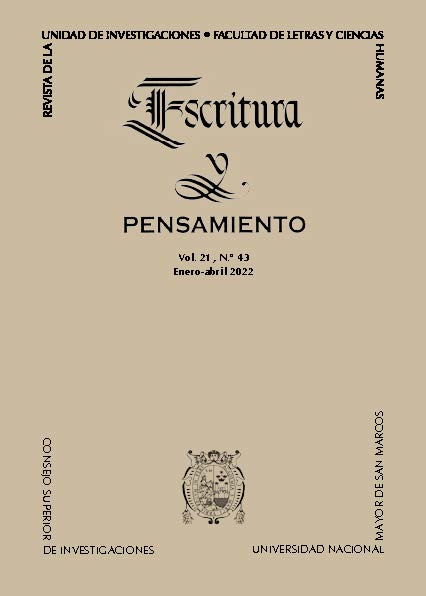Julio Chalco Fernández. Chinkana y otros relatos. Lima: Pakarina Ediciones, 2021, 144 pp.
DOI:
https://doi.org/10.15381/escrypensam.v21i43.22793Abstract
Chinkanas, in Andean culture, are caves or tunnels that can be connected to each other and can lead to misplacement due to their labyrinthine structure. These characteristics, as suggested by anthropologist Mario Polia Meconi (1999), attribute to them "symbolisms of darkness, humidity, interiority and depth" (p. 168). Therefore, its relationship with fecundity and maternity are evident since it represents the image of the "inner world", that is to say, of mother earth or Pachamama, and all that this can germinate. Likewise, the chinkanas are strongly related to the death/resurrection dichotomy; because the mummies, similar to fetuses in their postures, reside in the depths of these spelunks, and because they are at the same time indicators of the return, as spiritual entities, or of life. In short, the chinkanas are geographic places charged with sacred prestige: both of origin and of death.
References
Bauman, Z. (2003). Modernidad líquida. Fondo de Cultura Económica.
Bourdieu, P. (2000). La dominación masculina. Bacerlona: Anagrama.
Chalco Fernández, J. (2021). Chinkana y otras historias. Pakarina.
Polia Meconi, M. (1999). La Cosmovisión Religiosa Andina en los documentos inéditos del Archivo Romano de la Compañía de Jesús 1581-1752. Pontificia Universidad Católica del Perú.
Rama, Á. (2008). Transculturación narrativa en América Latina (2da Edición). Buenos Aires: El Andariego.
Downloads
Published
Issue
Section
License
Copyright (c) 2022 Eli Jeferson Bañez Gamarra

This work is licensed under a Creative Commons Attribution 4.0 International License.
AUTHORS RETAIN THEIR RIGHTS:
a. The authors retain their trademark and patent rights, and also over any process or procedure described in the article.
b. The authors retain the right to share, copy, distribute, execute and publicly communicate the article published in the Escritura y Pensamiento (for example, place it in an institutional repository or publish as part a book), with acknowledgment of its initial publication by Escritura y Pensamiento.
c. Authors retain the right to make a subsequent publication of their work, to use the article or any part of it (for example: a compilation of their work, lecture notes, thesis, or for a book), provided that they indicate the source of publication (authors of the work, journal, volume, number and date).





